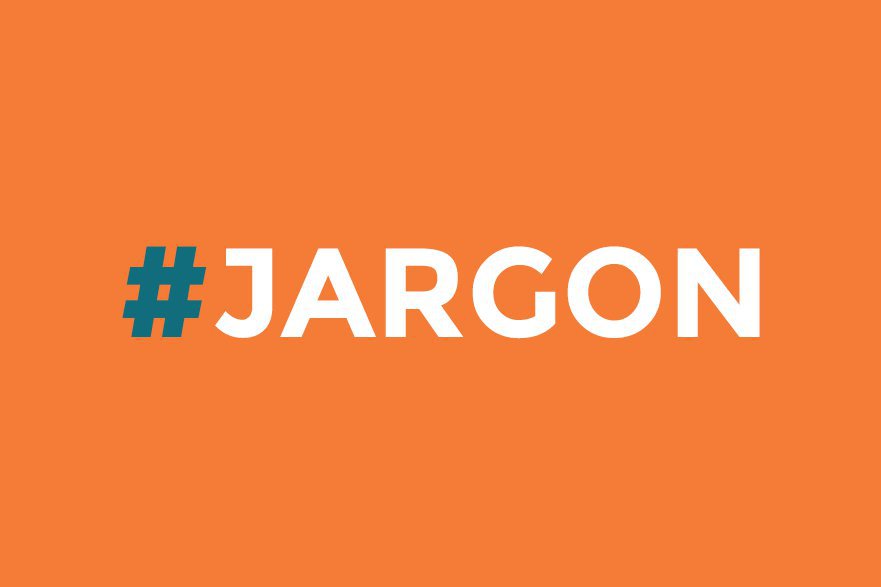Learn with Us
Cutting Edge Blogging Advice: Smart Jargon!


Actually, let’s not. Let’s go get some antacids, because that paragraph probably gave some of us heartburn, then talk about why jargon is horrible.
When you’re blogging, your job is to be understood.
That’s how communication works; it’s receiver-focused, and that means what you understand matters much less than what your audience understands.
Jargon, when used too widely without common understanding, doesn’t make you sound smart. It makes you sound impenetrable, unapproachable, or dull. We want none of that.
Some of it comes back to Poe’s Law and other “rules” of the internet.
In web communications, particularly blogging, you’ve got a certain set of tools you can use to educate your visitors as to the tone you’re taking. The terms you use, and the way you use them is a big part of that.
One of the many informal rules of the internet, Poe’s Law basically states that; without sufficient framing, it’s really hard to tell whether something you see on the internet is genuine, parody, sarcasm, or zealotry.
On the internet, no one can hear your smirk.
There are a lot of internet guiding principles like Poe’s Law, but most of them come down to similar messages; in general, the more you focus on clarity, authenticity, and avoiding buzzwords or common mainstay arguments, the better people tend to understand you. Authenticity is important here. It doesn’t always work, but it works better than just about any two words in that opening paragraph.
Two kinds of jargon – one good, one bad.
Jargon comes down to two primary categories;
- Terms that are used by an industry as a shorthand for bigger processes, and
- Terms used to create a sense of mystery or importance that isn’t necessary
You can find ways to turn just about anything into a near-taboo phrase – even words like authenticity. It’s using phrases to create mystery, rather than creating understanding, that’s the problem.
You’ll find a lot of people everywhere using really big words to sound smart or important, without needing to. This happens so often in academic circles that a paper on the subject entitled “Consequences of Erudite Vernacular Utilized Irrespective of Necessity: Problems with Using Long Words Needlessly” ended up winning an Ig Nobel Prize in 2006 for its address of the problem.
In both inbound marketing and content strategy, the message remains; if you don’t need to use a big or arcane term, don’t. Your readers will thank you for it.
Occasionally, jargon – especially industry-related jargon – is unavoidable.
For those of us working in technical organizations, regulated industries, for associations, or anywhere with a lot of red tape associated with them, jargon actually makes life easier.
It’s far less complicated to talk about “clickbait articles” or “listicles”, for example, than it is to talk about “short-form text content” in the same sentence. Your business probably has some of these terms as well, either words or phrases you use because they stand in for much longer ideas in a way that’s meaningful to you, your clients, and your coworkers.
When approaching marketing materials, however, there are some things you can do to bring visitors and those not familiar on board with your jargon in smooth ways that make you more approachable, rather than encouraging mysterious business.
If you must use jargon, here are some ways to make it easier to understand
If it’s an acronym, use the <abbr> tag in your html. This tag lets you add some information, like the expanded form of the term, right into your text. It’s good for readers as it gives them a queue that you’re not just hiding behind the abbreviations, and it’s good for search engines, which like context and hints.
Explain your terminology. Sometimes, this can be done within a given document – either in a <blockquote> and/or <cite> setting (again useful for both users and search), with an image that depicts a process you’re talking about, or by taking a paragraph to define your premise before moving on to the value of the piece itself.
Create content that details your terms and shorthand. There are a lot of ways to do this, but if you’re going to be referencing a given term or process repeatedly, it’s worth having some in-depth content to address it. Sometimes in the form of blog posts you can link to (as we did with Clickbait as a term above), or in the form of product and service pages you can cite with links inside other documents.
Your job, when it comes to marketing, is to make a very clear value statement.
That’s it. That’s all. Sure, there’s a lot of detail and nuance that goes into that job – but at the very bottom level, clearly communicating your business’ value to others is what’s important.
Nowhere in that, unless you’re selling suspense (which is mostly the job of entertainment media) does encouraging your potential clients to be confused or less informed make sense.
Source: Hello BLOG

